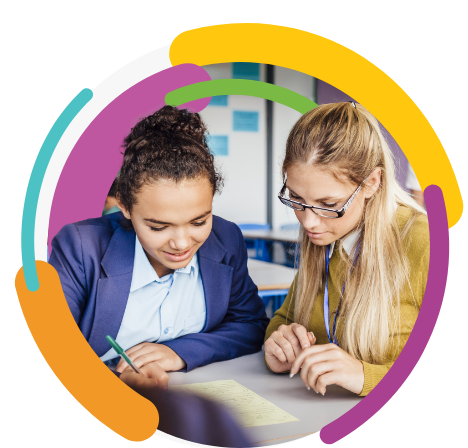
By the time the school year ends, it’s hard to tell who’s more ready for summer – teachers, students, or parents. After a long year of homework, projects, and early mornings, it’s nice to take a break and relax a little.
No matter how hard it is to believe when you’re sitting by the pool or packing your suitcase for summer vacation, the next school year is right around the corner. While it’s easy for students to slip out of the school routine over summer break, some students experience learning loss that can seriously impact their academic performance in the new school year.
What Is Learning Loss?
Even if you’ve never heard the phrase “learning loss,” sometimes referred to as “summer slide” or “brain drain,” you’re probably familiar with it. These terms all refer to students losing some of the knowledge they gained in the previous school year over the summer. Education researchers have been studying this phenomenon as far back as 1906. Statistics vary slightly, but a recent study in the American Education Research Journal shows that the average student loses 17-34% of the previous year’s learning gains over summer break.
What Parents Can Do
While no child wants to study over the summer, it’s important for students to practice skills they already have to ensure a successful transition into the next school year. The good news is that there are lots of fun, easy ways to integrate learning into the things families may already be doing over the summer. Even better? There are tons of free options, too. Here are some of our top suggestions:
- Prioritize Reading: Most libraries offer summer reading programs that incentivize children to read with different rewards. Even if your child can’t join an official summer reading program, reading in any form is one of the best ways to prevent summer learning loss. Summer is a great time for students to explore books they might not be assigned during the school year. As long as the book is challenging enough, let kids explore their interests!
- Create Your Own Field Trips: After summers of closures and social distancing, museums, aquariums, and other fun attractions are finally open for everyone to enjoy – many with special rates for children or even free admission days. Look for attractions that offer hands-on experiences for children and encourage learning by asking your child to read signage, navigate with a map, and summarize what they’ve learned.
- Build Learning into Your Vacation: Encourage your child to keep a travel journal or write postcards to family and friends while you’re out of town. You can integrate math into your trip as well by having your child calculate the distance traveled or create a budget for different activities or souvenirs.
- Take Advantage of Authentic Learning Opportunities: You don’t have to go out of your way to create learning opportunities. From measuring ingredients while making to dinner to learning about plants while gardening together, there are so many opportunities to integrate learning into your day-to-day life. Even a trip to the grocery store can become a chance to refresh math skills!
- Embrace Technology: While many parents are trying their best to keep their children from spending the entire summer on their tablets, games can be a powerful tool for combating learning loss. There are hundreds of free games that encourage math, language, and science skills that are so fun children won’t even realize they’re learning. Check the app store for highly reviewed options for your child’s age range.
- Plan a Project: For older students, a long-term project like redecorating their bedroom can be a great option to learn all summer. Have them create a plan to accomplish the task, manage the project timeline, design a budget, and more. The best part? They’ll have something great to show for their efforts at the end of the summer.
- Consider College: You don’t need to wait until your child is a senior to start thinking about college. Whether you’re able to visit a campus or do a virtual visit, talking about college is a great opportunity for your child to start thinking about what subjects interest them and how what they’ve already learned can be applied.
What Schools Can Do
The journey to combat summer learning loss doesn’t stop when the summer is over. Once class is back in session, schools and teachers should be ready to address learning loss before it becomes a serious problem. While some review is always necessary at the beginning of the year, it’s not fair to the rest of the class to spend additional time on last year’s learning materials for a handful of struggling students.
With busy schedules and multiple responsibilities to balance, one of the best ways that teachers can identify learning loss is through technology that can alert them to patterns of behavior indicative of learning loss. Training and professional development courses can also help teachers and staff identify signs of learning loss not easily captured by data – as well as give them the confidence to address it.
Once learning loss has been identified, action should be taken as soon as possible, ideally away from the main classroom setting. This allows struggling students to get the guidance they need without disrupting other learners and return to the classroom caught up and ready to learn. With a lack of substitutes, paraeducators, and teachers, however, it isn’t always easy to find staffing to manage these breakout sessions. Even more challenging, these intervention sessions should meet certain criteria and be conducted by experts that can help students overcome learning loss in the ways that are best for them.
Turning to data-driven, proven instructional strategies from experts is often the best approach. FACTS Ed offers Title I/Title III instructional services with custom education programs or enhancements for schools’ current programs. Through small group or one-on-one instruction, experienced FACTS Ed certified teachers can address learning loss and ensure that students get back on track – all while leaving teachers free to keep up with their curriculum. We’ll even work with your school to help make the most of federal funding.
To learn more about instructional services and how FACTS can help your school maximize federal funding to meet student, teacher, and parent needs, request more information here.
Recent Blogs
- What’s New and Next at FACTS: Q2 Product Roadmap Update
- Every Club Counts: Bringing Custom Apparel and Spirit Wear to All Student Programs
- Unlocking School Security: Why Schools Need a Visitor Management System
- Why School Fee Transparency Matters
- What You Need to Know About the ECCA: A New Federal Opportunity for School Choice


